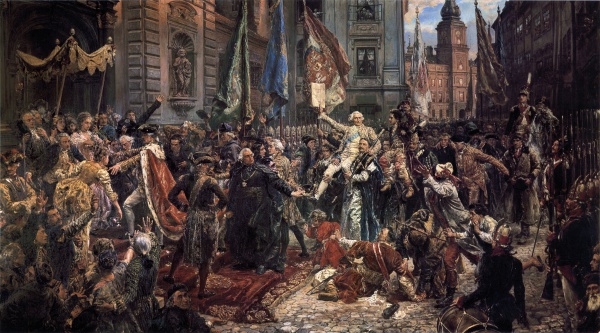Facts About The Constitution of May 3, 1791
The "Constitution of May 3, 1791" painted by Jan Matejko in 1891, is a celebrated Romantic oil painting that commemorates the Polish Constitution of the same date. This masterpiece vividly depicts a grand scene featuring numerous historical figures, including King Stanisław August Poniatowski, Stanisław Małachowski, Kazimierz Nestor Sapieha, Hugo Kołłątaj, and Ignacy Potocki. Matejko completed the work between January and October 1891 to commemorate the centenary of the Constitution, and it remains one of his most significant creations.
The Constitution itself was a landmark in the history of the Polish–Lithuanian Commonwealth, designed to address political issues and introduce democratic reforms. Despite these noble intentions, it faced strong opposition from neighboring powers, eventually leading to the Polish–Russian War of 1792. Although it was only in effect for a short period, the Constitution symbolized Polish sovereignty for over a century.
Matejko's painting captures the procession of deputies from the Royal Castle to St. John's Collegiate Church on the evening of May 3, 1791. To enhance the symbolic power of the scene, Matejko took artistic liberties by including figures who were either not present or had already passed away, creating a symbolic representation of the Commonwealth's final years. Modern historians have analyzed and interpreted the painting's composition and historical accuracy.
The characters in the painting are meticulously detailed, with key figures like Stanisław Małachowski, Tadeusz Kościuszko, and King Stanisław August Poniatowski prominently featured. Matejko's portrayal of these individuals, their interactions, and the symbolic elements throughout the painting reflect the political climate and tensions of the time.
Art critics and historians have discussed the painting's historical significance, artistic merit, and Matejko's departure from his usual style. The detailed identification of characters and the depiction of key events surrounding the Constitution of May 3, 1791, make Matejko's painting a valuable historical and artistic representation of a pivotal moment in Polish history.

 Belarus
Belarus